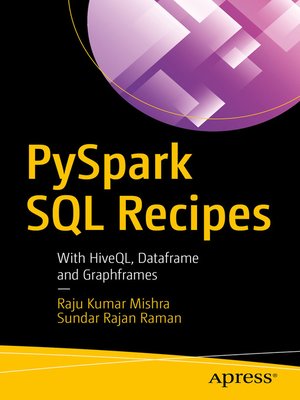PySpark SQL Recipes
ebook ∣ With HiveQL, Dataframe and Graphframes · Professional and Applied Computing
By Raju Kumar Mishra

Sign up to save your library
With an OverDrive account, you can save your favorite libraries for at-a-glance information about availability. Find out more about OverDrive accounts.
Find this title in Libby, the library reading app by OverDrive.



Search for a digital library with this title
Title found at these libraries:
| Library Name | Distance |
|---|---|
| Loading... |
Carry out data analysis with PySpark SQL, graphframes, and graph data processing using a problem-solution approach. This book provides solutions to problems related to dataframes, data manipulation summarization, and exploratory analysis. You will improve your skills in graph data analysis using graphframes and see how to optimize your PySpark SQL code.
PySpark SQL Recipes starts with recipes on creating dataframes from different types of data source, data aggregation and summarization, and exploratory data analysis using PySpark SQL. You'll also discover how to solve problems in graph analysis using graphframes.
On completing this book, you'll have ready-made code for all your PySpark SQL tasks, including creating dataframes using data from different file formats as well as from SQL or NoSQL databases.
What You Will Learn
Understand PySpark SQL and its advanced features
Use SQL and HiveQL with PySpark SQL
Work with structured streaming
Optimize PySpark SQL
Master graphframes and graph processing
Who This Book Is ForData scientists, Python programmers, and SQL programmers.
PySpark SQL Recipes starts with recipes on creating dataframes from different types of data source, data aggregation and summarization, and exploratory data analysis using PySpark SQL. You'll also discover how to solve problems in graph analysis using graphframes.
On completing this book, you'll have ready-made code for all your PySpark SQL tasks, including creating dataframes using data from different file formats as well as from SQL or NoSQL databases.
What You Will Learn
Who This Book Is ForData scientists, Python programmers, and SQL programmers.







